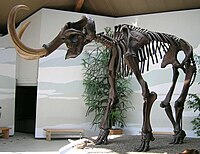
Photo from wikipedia
ABSTRACT Considering the effects of circadian misalignment on human pathophysiology and behavior, it is important to be able to detect an individual’s endogenous circadian time. We developed an endogenous Clock… Click to show full abstract
ABSTRACT Considering the effects of circadian misalignment on human pathophysiology and behavior, it is important to be able to detect an individual’s endogenous circadian time. We developed an endogenous Clock Estimation Model (eCEM) based on a machine learning process using the expression of 10 circadian genes. Hair follicle cells were collected from 18 healthy subjects at 08:00, 11:00, 15:00, 19:00, and 23:00 h for two consecutive days, and the expression patterns of 10 circadian genes were obtained. The eCEM was designed using the inverse form of the circadian gene rhythm function (i.e., Circadian Time = F(gene)), and the accuracy of eCEM was evaluated by leave-one-out cross-validation (LOOCV). As a result, six genes (PER1, PER3, CLOCK, CRY2, NPAS2, and NR1D2) were selected as the best model, and the error range between actual and predicted time was 3.24 h. The eCEM is simple and applicable in that a single time-point sampling of hair follicle cells at any time of the day is sufficient to estimate the endogenous circadian time.
Journal Title: Chronobiology International
Year Published: 2020
Link to full text (if available)
Share on Social Media: Sign Up to like & get
recommendations!